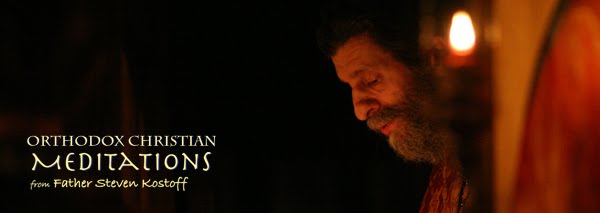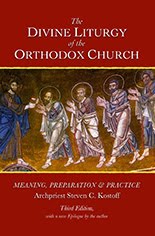Dear Parish Faithful,
I was going to prepare some “fragments for Friday” this morning, but thought instead to share another fine article from Tony Vrame, Director of Religious Education of the Greek Orthodox Archdiocese. The article has been prepared specifically for “religious educators,” but since we are always in the process of educating ourselves with the teaching of the Church as an ongoing process of enlightenment, I believe that we can all learn a great deal from what Tony shares with us below. A good deal of this points toward Holy Week and the Passion, but we can begin to read it in preparation for the services of Holy Week still a few weeks away.
We would like to wish our Roman Catholic and Protestant friends a blessed Easter celebration as they rejoice in the Resurrection of our Lord Jesus Christ. Believing in the bodily resurrection of Jesus is essential, and thus we share a profound foundational belief with all other Christians who continue in that belief.
Yet, after this weekend, we will be “on our own” in observing Great Lent as Orthodox Christians. This is one of those years when the gap between the Western Easter and our Orthodox Pascha is at its widest – a full five weeks. It is important that we maintain the Lenten practices of the Church in the midst of a secular and self-indulgent culture. Token minimalism is not sufficient or very effective in maintaining our identity within a cultural setting that finds us to be a “minority group.”
Fr. Steven
| Icon of the Last Supper, by Simon Ushakov |
Lamb of God
We will hear the phrase “lamb of God” as we approach Holy Week. It has deep roots in the Old and New Testaments. For Christians, it connects to theological questions about the meaning of Christ’s Passion and our salvation. The topic is huge and rich. I won’t be able to say everything here, and this is only one dimension of the questions about the Passion and salvation, but these points might encourage you to listen more closely to the Scriptures and hymns of the next few weeks.
The Old Testament background
The “sacrifice of Isaac” (Genesis 22). God tests Abraham by asking him to sacrifice his son Isaac. The test is “Is our relationship/covenant strong enough that you will honor this terrible request?” As Abraham begins the sacrifice, an angel calls out and stops him. Abraham’s willingness to make the sacrifice proves his faithfulness to God. Abraham then sees a ram, which he offers “as a burnt offering instead of his son.” (Genesis 22:13).
Passover. In the Exodus story (Exodus 12), the tenth plague was the death of every first born child. Moses instructs the Hebrew people to kill the Passover lamb (a year old male lamb without blemish; it could even be a goat) and place some of the blood on the lintel and two doorposts of their homes, so that God would “pass over” and spare the first born. (They were even instructed how to cook the lamb and that they should eat it.) Thus, Passover saved the Hebrew people from death in Egypt and this event led to their freedom and the journey to a new life in God’s promised land.
In Leviticus. Ancient Judaism practiced animal sacrifice and offerings of other products, such as grains and fruits. The Book of Leviticus (especially chapters 1-7) provides in great detail the instructions and laws pertaining to sacrifices. Their covenant with God required this and the Law of Moses (the Law of Moses was far larger than the Ten Commandments) provided the instructions. Different kinds of offerings and sacrifices were made for various reasons. In each case, the Law prescribed what should be offered or sacrificed, what kind of animal, what kind of cereals and fruits. For example, when Joseph and Mary presented Jesus at the Temple, forty days after His birth, they offered a “pair of pigeons” (Luke 2:24), because they could not afford the lamb that the Law required as a sin offering for the birth (itself a long story, but read Leviticus 12:1-8).
While sacrifices and offerings could be made for a number of reasons, most were made as “atonement” for sins, cleansing of guilt, and the desire for forgiveness. As one person put it, atonement means “at – one – ment.” The importance of the sacrifice was the shedding of blood, meaning death. That the person making the offering also had to kill the animal was a symbolic connection between them. Sin cost a life. The penalty for sin is death, but the animal dies in the place of the sinner.
The ritual of animal sacrifice is prescribed in detail and was designed to make the connection between the sacrifice and the one making the offering. The animal is brought to the Temple by the one making the offering; he places his hand on the animal’s head, slaughters, skins, and butchers it (Remember, these were farmers and were accustomed to this, to provide food.). Usually the fatty portions are then burned on a fiery altar. The priest would sprinkle some of the blood around the altar. In some cases, the individual and or the priests of the Temple would be able to eat the remainder of the sacrifice.
This background should help as we reflect on the Passion of Christ.
There are two timelines in the Gospels for the events from the Last Supper to the Crucifixion. The Gospel of Mark places the Last Supper on the first day of unleavened bread (Mark 14:12) when the Passover lambs would be slaughtered. The Gospel of John places Jesus’ crucifixion on the same day as the slaughter of the Passover lambs (John 19:14). The following article explains more about this.
You should begin seeing the connections to our understanding about Christ’s passion.
Jesus is a Passover lamb. That the Passion of Christ happened around Passover should not be lost on anyone. The Jews were commanded to remember the exodus from Egypt annually. Christ is without blemish, the only sinless one, and is killed like the Passover lamb. Jesus’s death and resurrection frees us from death and leads us to a new way of life in the Kingdom of God, the new Promised Land. This is why we can say Christ is the New Passover.
Jesus is the sacrifice. As He says, “For the Son of man also came not to be served but to serve, and to give his life as a ransom for many.” (Mark 10:45). Christ also says, “For God so loved the world that he gave his only Son, that whoever believes in him should not perish but have eternal life.” (John 3:16). John the Baptist cried out when seeing Jesus, “Behold, the Lamb of God, who takes away the sin of the world!” (John 1:29). Only a lamb that is sacrificed could do this. Jesus’s death on the cross is an offering to God. God Himself makes the offering and allows His own son to be killed.
Jesus is the Suffering Servant who has accepted the fallen condition of humanity and “paid the price” for all. As the prophet Isaiah says about Him, “But he was wounded for our transgressions, he was bruised for our iniquities;upon him was the chastisement that made us whole, and with his stripes we are healed. All we like sheep have gone astray;we have turned every one to his own way; and the Lord has laid on him the iniquity of us all.He was oppressed, and he was afflicted, yet he opened not his mouth; like a lamb that is led to the slaughter,and like a sheep that before its shearers is dumb, so he opened not his mouth. (Isaiah 53:5-7).
Christians have commonly seen Christ’s death on the Cross as an “atonement.” We say Christ died for our sins and His death on the Cross saves us. But the Passover connection should remind us that the death leads to resurrection and the Resurrection of Christ opens the Kingdom of God for those who believe in Him. Salvation means being spared from death and entering the Kingdom of God.
The Church continues to use the phrase and idea “lamb of God."
In the Doxology, we praise Christ as the lamb of God who takes away the sins of the world, practically a direct quote from John 1:29.
In our liturgical life today, the bread of the Eucharist, one portion of the prosphoro is called the Amnos, the Lamb. It is marked with the ICXC NIKA, meaning Jesus Christ Conquers. Portions of the above verses from Isaiah are recited in the Proskomide service, which prepares the bread and wine before the Liturgy. The Lamb is stabbed with a lance. In the Liturgy, the lamb is offered to God and consecrated as the Body of Christ. And before Holy Communion, the lamb is broken before being placed in the chalice, and in Communion, we eat or consume the lamb.
In the Liturgy, we call the offering a “bloodless sacrifice.” Christ’s death on the cross is the ultimate, that is, final, sacrifice or offering of blood and flesh. From now on, the only offering needed is bread and wine, done in remembrance of the Lord. Christ Himself told us to do this. This offering and shared meal is a sign of the covenant, the relationship, Christians have with God.
Anton C. Vrame, Ph.D.
Director
Department of Religious Education
Greek Orthodox Archdiocese of America







